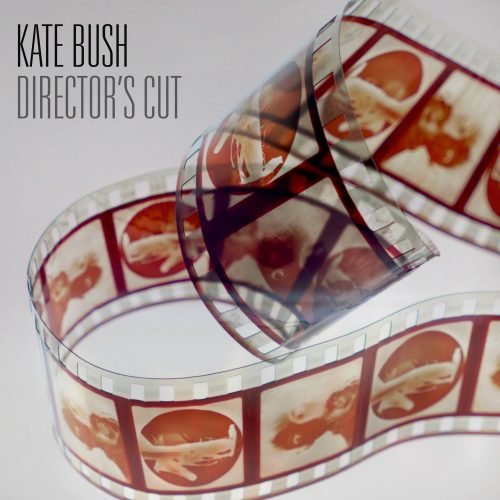In the expansive tapestry of Kate Bush’s illustrious career, “Director’s Cut” emerges as a fascinating, albeit perplexing, entry. Released in 2011, this album situates itself in a unique position within Bush’s discography. Unlike the groundbreaking innovation of “The Dreaming” or the lush narratives of “Hounds of Love,” “Director’s Cut” delves into a realm of reimagining and introspection, revisiting tracks from her albums “The Sensual World” (1989) and “The Red Shoes” (1993). This endeavor places “Director’s Cut” in a special category, not as a departure from her previous work but as an intimate re-exploration and refinement of her own musical landscape.
Artistic Intentions
Bush’s artistic intentions behind “Director’s Cut” can be seen as a desire to reclaim and recontextualize her past works. Through this album, she offers new interpretations of her songs, altering their sonic texture and, in some cases, their lyrical content. This process is akin to a director revisiting their own films, making adjustments with the benefit of hindsight and technological advances. Bush has been candid about her motivations, expressing a need to rectify certain aspects of these songs that she felt were left unresolved or imperfect at their time of original release. This project was as much about personal satisfaction and artistic integrity as it was about offering her audience a new way to experience these familiar tracks.
“It was a personal exercise really – I wanted to revisit some of my older tracks and play with them.“
Kate on Director’s Cut
However, “Director’s Cut” stands at a crossroads of Bush’s adventurous spirit and the inherent challenges of revisiting one’s past works. While the album underscores her unmatched prowess as a sonic architect and her willingness to experiment, it also navigates the delicate balance between innovation and nostalgia. As such, “Director’s Cut” is not just a testament to Bush’s artistic vision but also a reflection on the evolving relationship between an artist and their creations over time. In the broader music landscape, it prompts a discussion on the nature of artistic revision and the ways in which artists can engage with their own legacies.
Sonic Exploration

In the auditory journey of “Director’s Cut,” Kate Bush embarks on a nuanced sonic exploration that both aligns with and diverges from her established musical universe. The production quality of the album stands out for its meticulous attention to detail and clarity. Bush, renowned for her perfectionism and innovative production techniques, ensures that each track on “Director’s Cut” is polished, with every sound and note intentionally placed. The production does not lean towards the lo-fi or gritty; instead, it opts for a lush, immersive sound that envelops the listener. This clarity and depth of production serve the album’s themes well, as it allows the reinterpreted songs to breathe anew, presenting them in a light that is both familiar and refreshingly different.
Musical Arrangements
The musical arrangements on “Director’s Cut” are a testament to Bush’s enduring creativity and willingness to push boundaries. She revisits the arrangements of her earlier works with a keen ear, incorporating subtle changes that significantly alter the emotional landscape of the songs. The use of traditional instruments, alongside electronic elements, creates a rich tapestry of sounds that are both complex and captivating. Particularly innovative arrangements can be heard in tracks like “Deeper Understanding,” where the addition of an Auto-Tuned ‘digital’ voice emphasizes the song’s themes of technology and alienation. Meanwhile, “This Woman’s Work” is stripped back to its emotional core, with Bush’s vocals taking center stage against a sparse piano backdrop, showcasing her ability to convey profound emotional depth with minimal instrumentation.
Genre Elements
Genre-wise, “Director’s Cut” remains difficult to pigeonhole, reflecting Bush’s career-long tendency to blend and transcend musical categories. While the album predominantly stays within the realms of art rock and alternative, its tracks meander through elements of folk, classical, and even touches of electronic music. This genre-blending is not novel for Bush but is executed with the expertise of an artist fully in command of her craft. The album does not seek to reinvent the wheel in terms of genre but rather to refine and deepen the exploration of genres Bush has already made her own. In doing so, “Director’s Cut” underscores Kate Bush’s status as a musical chameleon, capable of navigating and integrating a wide range of musical styles into a coherent and compelling artistic vision.
Lyrical Analysis

“Director’s Cut” by Kate Bush, in its lyrical journey, offers a deep dive into the intricate tapestry of human emotions, relationships, and the introspective quest for understanding and connection. Central to the album are themes of love, loss, reflection, and the nuanced interplay between the human and the technological. Through the reimagining of her earlier works, Bush revisits these themes with a matured perspective, peeling back layers to reveal more profound insights and emotional depths.
The lyrics across “Director’s Cut” are characterized by their poetic nature and complexity. Bush’s songwriting has always been distinguished by its vivid imagery and storytelling prowess, qualities that remain undiminished in this collection. The tracks oscillate between being narrative-driven and abstract, offering listeners a spectrum of lyrical content that ranges from the deeply personal and specific to the universal and open-ended. For instance, “The Sensual World” (reimagined as “Flower of the Mountain”) allows Bush to explore sensuality and connection using James Joyce’s text, blending narrative with a stream of consciousness. In contrast, “Deeper Understanding” addresses the theme of digital alienation with a narrative about seeking solace in technology, a theme that has only become more relevant with time.
Emotional Impact
The emotional impact of “Director’s Cut” is profound, with Bush’s lyrics playing a pivotal role in shaping the album’s emotional resonance. The revisited songs carry a weight of nostalgia and reflection, often evoking a sense of melancholy and contemplation. For instance, the longing and introspection in “Moments of Pleasure” are palpable, as Bush recounts memories of loved ones lost, blending sadness with a celebration of life and connection. “This Woman’s Work,” known for its emotional intensity, retains its power to evoke empathy and sorrow, highlighting Bush’s ability to articulate vulnerability and the depth of human experience.
Through “Director’s Cut,” Kate Bush demonstrates an unyielding capacity to explore and express complex themes with lyrical sophistication. The album’s lyrics, rich in imagery and emotion, invite listeners into a reflective dialogue with the music, encouraging a deeper engagement with the themes articulated. Bush’s use of recurring motifs, such as the interplay between nature and technology or the exploration of feminine strength and vulnerability, weaves a coherent narrative thread throughout the album, enriching its thematic and emotional landscape.
Cohesion and Flow

In assessing the cohesion and flow of Kate Bush’s “Director’s Cut,” it’s imperative to recognize the unique nature of this album within her discography. As a collection that revisits and reinterprets previously released tracks, “Director’s Cut” faces the inherent challenge of creating a seamless narrative and emotional progression. Despite these hurdles, the album manages to weave a tapestry that, while occasionally meandering, maintains a strong undercurrent of thematic consistency and introspective depth.
The track progression on “Director’s Cut” does not follow a linear narrative in the traditional sense. Instead, the album offers an emotional progression, with songs grouped more by their thematic resonance and mood than by a straightforward story. This approach allows listeners to navigate through varying emotional landscapes, from the reflective melancholy of “Moments of Pleasure” to the technological cautionary tale of “Deeper Understanding.” While the transitions between tracks might not always feel seamless, the emotional depth and complexity of Bush’s songwriting provide a connective tissue that holds the album together.
Thematic Consistency
Thematic consistency is one of the stronger aspects of “Director’s Cut,” with the revisited themes of love, loss, introspection, and the human condition threading through the album. The stylistic and emotional shifts present are deliberate, reflecting the varied nature of human experience and artistic exploration. However, these shifts rarely feel jarring, thanks in large part to Bush’s cohesive vision and the uniformity of the album’s production quality. The reimagined arrangements and updated production techniques serve to unify the tracks under a singular sonic aesthetic, despite their origins in different periods of Bush’s career.
Nonetheless, “Director’s Cut” occasionally struggles with its own ambitious premise, finding it challenging to completely harmonize the diverse moods and themes of the selected tracks into a single, cohesive narrative. While individual songs stand out for their beauty and complexity, the album as a whole can sometimes feel like a collection of disparate pieces rather than a unified work. This is perhaps an inevitable outcome given the nature of the project, and it may not significantly detract from the listener’s experience, particularly for those who are already fans of Bush’s work and are familiar with the original contexts of these songs.
Standout Tracks and Moments
In the landscape of Kate Bush’s “Director’s Cut,” certain tracks emerge with striking clarity, standing apart for their innovative reinterpretation, emotional depth, and artistic integrity. These standout tracks not only highlight Bush’s unparalleled creativity but also underscore the album’s thematic richness and sonic experimentation.
Key Tracks
“Flower of the Mountain” (originally “The Sensual World”) is one such standout. Given the opportunity to use the original text from James Joyce’s “Ulysses” that she was denied in the original release, Bush transforms the song into a more direct embodiment of Molly Bloom’s soliloquy. This track exemplifies the album’s concept of revisitation and refinement, with its more pronounced use of traditional Irish instruments weaving a deeper connection to Joyce’s work. The addition of the actual text Bush originally intended imbues the song with a newfound authenticity and literary depth, creating a bridge between music and classic literature that is rare and profound.
“Deeper Understanding” receives a significant makeover from its 1989 version, becoming even more relevant in the context of today’s digital age. Its themes of isolation and the seductive escape offered by technology resonate deeply in an era dominated by screens and virtual interactions. The addition of the Auto-Tuned ‘digital’ voice serves as both an innovative musical choice and a thematic reinforcement, highlighting the artificiality of the solace found in technology. This track, with its haunting melody and prescient lyrics, stands out for its emotional impact and commentary on human connectivity in the modern world.
Memorable Moments
A memorable moment that captures the essence of “Director’s Cut” is found in the stark, emotional delivery of “This Woman’s Work.” The stripped-back arrangement, focusing on Bush’s voice and piano, allows the song’s emotional weight and vulnerability to shine. The raw delivery of the line “I know you have a little life in you yet” pierces through the arrangement, showcasing Bush’s ability to convey deep emotional truths with simplicity and power. This moment epitomizes the album’s intimate exploration of human experience, laying bare the fears, loves, and regrets that define us.
Another profound moment occurs in “Moments of Pleasure,” where Bush reminisces about friends and family members who have passed away. The line “Just being alive, it can really hurt” is delivered with such genuine reflection and melancholy that it becomes a poignant reminder of the album’s exploration of loss and memory. It’s in these deeply personal revelations that Bush’s songwriting transcends mere musical composition, becoming a shared space of emotional resonance and human connection.
“Director’s Cut,” through these standout tracks and moments, offers a unique glimpse into Kate Bush’s artistic soul. It’s an album that challenges the norms of music production and revisitation, creating a space where past and present coalesce into something timeless. The innovation in “Flower of the Mountain” and the thematic foresight in “Deeper Understanding,” along with the emotional rawness found in “This Woman’s Work” and “Moments of Pleasure,” underscore Bush’s enduring legacy as an artist unafraid to explore, refine, and express the deepest facets of the human condition.
Artistic Contribution and Innovation

“Director’s Cut” by Kate Bush occupies a distinctive place not just within her own discography but also within the broader music industry. It challenges conventional boundaries through its very premise—a reimagining of an artist’s previous works is a rare endeavor, especially with the depth and commitment Bush has demonstrated. This project blurs the lines between past and present, offering a model for artistic reflection and evolution that is seldom seen in the music industry.
Within its genre, “Director’s Cut” stands out for its audacious approach to song reinterpretation. Bush does not merely remaster or remix her old tracks; she re-records them, altering arrangements, lyrics, and production to convey her current artistic vision. This method of revisiting one’s past work with the intention of altering its essence is a bold deviation from industry norms, where the focus is often on producing new content rather than re-evaluating the old. Bush’s willingness to dissect and reconstruct her earlier compositions speaks to a broader artistic philosophy that values growth, introspection, and the fluidity of creative expression.
Innovation in Production & Thematic Exploration
The innovation of “Director’s Cut” can be found in its nuanced approach to production and thematic exploration. The album employs modern production techniques while maintaining the organic essence of the original tracks, a balance that requires both technical skill and a deep understanding of the material. This is evident in the updated arrangements, which are both lush and intricate, enhancing the emotional and narrative depth of each song without overshadowing their original spirit.
Furthermore, the thematic exploration of “Director’s Cut” reflects a matured perspective on issues like technology, human connection, and existential reflection. Bush’s engagement with these themes through the lens of her past work allows for a multi-layered dialogue between her past and present selves. The innovative use of Auto-Tuned vocals in “Deeper Understanding,” for instance, not only serves a thematic purpose but also showcases Bush’s adaptability to contemporary musical techniques, employing them in ways that enhance rather than detract from the song’s message.
Artistic Reinvention
In the context of the music industry at large, “Director’s Cut” stands as a testament to the possibilities of artistic reinvention and the enduring relevance of an artist’s work. It challenges the disposability often associated with pop music, suggesting that songs, like their creators, have evolving identities. By choosing to re-engage with her previous creations, Bush not only redefines her relationship with these works but also invites listeners to reconsider their perceptions of permanence and change in art.
Closing Thoughts

In conclusion, “Director’s Cut” by Kate Bush is an album that both fascinates and frustrates, a testament to the artist’s relentless pursuit of creative evolution and artistic integrity. Its strengths lie in its innovative approach to revisiting past works, its polished production, and the emotional depth and lyrical complexity of its songs. These elements underscore Bush’s standing as a visionary artist unafraid to explore and redefine the boundaries of her musical expression.
Strengths & Weaknesses
However, the album is not without its weaknesses. The very nature of its premise—reinterpreting previously released tracks—may not resonate with all listeners, particularly those seeking new material. Additionally, the cohesion and flow between tracks can at times feel disjointed, reflecting the challenges of creating a unified narrative from songs originally meant for different projects. These aspects contribute to a sense of incompleteness for some, detracting from the overall impact of the album.
Despite these criticisms, “Director’s Cut” holds a unique place in Bush’s career as an intriguing exploration of artistic revision and reflection. It invites listeners to engage with her music on a deeper level, offering new insights into familiar tracks and highlighting the evolving relationship between an artist and their creations over time. For fans and newcomers alike, the album provides a window into Bush’s creative process, showcasing her willingness to challenge herself and her audience.
Official Rating
Given these considerations, “Director’s Cut” is awarded a rating of 6 out of 10. This score reflects the album’s balance between innovation and imperfection, recognizing its artistic ambitions while acknowledging its limitations in terms of cohesion and accessibility. While “Director’s Cut” may not stand as the pinnacle of Kate Bush’s discography, it serves as a valuable addition, offering a nuanced perspective on the artist’s work and the concept of musical reinvention. In the grand tapestry of Bush’s career, “Director’s Cut” exemplifies the restless spirit of an artist forever in pursuit of perfection, making it a compelling, if somewhat flawed, chapter in her ongoing musical journey.
